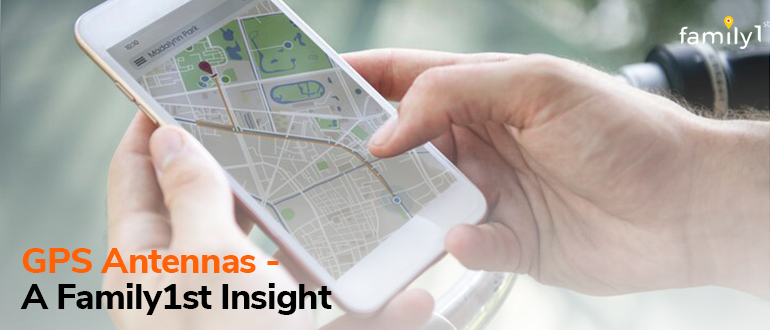Dementia is a growing public health concern, especially as the global population continues to age. The condition, characterized by a decline in memory, cognitive abilities, and daily functioning, has seen an increase in diagnosis rates. This trend is influenced by several factors, ranging from biological changes to lifestyle and environmental exposures. Understanding these contributors can offer insights into managing and potentially mitigating the impact of dementia in older adults.
Table of Contents
Dementia Statistics and Insights
Age and Risk
- Dementia diagnosis risk doubles approximately every five years after age 65.
- 2% of individuals aged 65–69 have dementia.
- Nearly 33% of individuals over 90 have dementia.
- 76 out of 1,000 individuals aged 85 and older develop Alzheimer’s annually.
Prevalence by Age
- 1.7% of adults aged 65–74 have dementia.
- 5.7% of adults aged 75–84 have dementia.
- 13.1% of adults aged 85 and older have dementia.
Gender Differences
- Women are more likely to develop Alzheimer’s disease than men:
- 13 women per 1,000 develop Alzheimer’s each year after age 80, compared to 7 men per 1,000.
- Prevalence of dementia among those aged 80–89:
- 24.19% for all dementia cases, with women representing a higher proportion.
- Non-Alzheimer’s dementia rates are similar for men and women.
- Women experience sharper memory decline in later years compared to men, with factors like depression and cognitive activity levels influencing this decline.
- Men show a stronger link between vascular risk factors (e.g., hypertension) and memory decline.
- Genetic risk:
- The ApoE4 gene variant increases dementia risk for both genders but has a more pronounced effect on women.
Education and Income Impacts
- Dementia prevalence:
- 7.9% among those with less than a high school diploma.
- 2.2% among individuals with a college degree or higher.
- Income-level disparities:
- 2.6% prevalence among adults with family incomes at or above 400% of the federal poverty level.
- Higher rates for individuals with lower incomes.
- Cognitive reserve:
- Higher education levels and engaging in mentally stimulating activities build cognitive reserve, delaying the onset of dementia symptoms. However, reserve diminishes with age or health decline.
Overall Prevalence
- 4.0% of adults aged 65 and older reported a dementia diagnosis in 2022.
- 3.4 million individuals aged 71 and older were living with dementia in 2002, representing a prevalence of 13.9%.
Young-Onset Dementia
- 33,950 individuals (approximately 7.0%) were diagnosed with dementia before the age of 65 as of June 2024.
Trends Over Time
- Dementia incidence in Europe and North America has decreased by approximately 13% per decade over the last 25 years.
- Men have experienced a more pronounced decline in dementia incidence compared to women.
- Future projections suggest significant reductions in new dementia cases by 2040 if trends continue.
Ethnic Disparities
- Black men and women are more likely to receive a new dementia diagnosis than White individuals, highlighting disparities in access to healthcare and early intervention.
Biological and Health-Related Factors
- Aging brains are more prone to the buildup of amyloid plaques and tau tangles, which are hallmarks of Alzheimer’s disease.
- Vascular damage from conditions like hypertension and stroke heightens the risk of dementia.
- Chronic health conditions:
- Hypertension, diabetes, and cardiovascular diseases exacerbate cognitive decline by reducing blood flow to the brain or causing inflammation.
Lifestyle and Environmental Factors
- Physical inactivity, poor diet, smoking, and excessive alcohol consumption are associated with increased dementia risk.
- Long-term exposure to environmental toxins, such as air pollution, is linked to higher dementia prevalence.
- Sensory impairments:
- Untreated hearing and vision loss in older adults significantly increase dementia risk.
Future Projections
- By 2050, the number of individuals living with dementia is expected to rise significantly due to the aging global population unless widespread preventive measures are adopted.
Diagnosis Awareness
- In 2022, there was a slight increase in awareness and diagnosis rates, with 4.0% of adults aged 65 and older reporting a dementia diagnosis.
Regional Trends
- Studies show that dementia prevalence varies globally, with Europe and North America experiencing declines, while rates in some developing countries remain steady or are increasing due to aging populations and limited healthcare resources.
Impact of Early Detection
- Early diagnosis initiatives have improved detection rates, helping patients access treatments and support systems earlier, potentially delaying the progression of symptoms.
These comprehensive statistics provide a deeper understanding of the scope and impact of dementia across demographics, health conditions, and global regions.
Read More: Memory Loss and Cognitive Decline: How GPS Trackers Helps Seniors and Their Families
Key Factors Influencing Dementia Diagnosis Rates
- Age as the Primary Risk Factor Age is the strongest predictor of dementia. The likelihood of developing dementia doubles approximately every five years after the age of 65. Data shows that 2% of individuals aged 65-69 are diagnosed, compared to nearly 33% of those over 90. The natural aging process exposes individuals to brain changes and health conditions that increase vulnerability to cognitive decline.
- Cumulative Brain Changes As people age, brain structures and functions undergo changes. The accumulation of amyloid plaques and tau tangles—hallmarks of Alzheimer’s disease—is more common in older adults. Additionally, vascular damage from high blood pressure and stroke contributes to dementia risk, emphasizing the interplay between aging and neurological health.
- Comorbid Health Conditions Chronic health issues like hypertension, diabetes, and cardiovascular diseases are more prevalent among older adults. These conditions can reduce blood flow to the brain, causing inflammation or damage to neural pathways, which accelerates cognitive decline.
- Genetic Susceptibility Genetics also plays a role in dementia. For instance, the ApoE4 allele is a well-documented risk factor for Alzheimer’s disease. While genetic predisposition cannot be altered, its impact is amplified by age-related changes, making older adults with these markers more susceptible.
- Lifestyle Choices Habits formed over a lifetime can have long-term consequences on brain health. Physical inactivity, poor diet, smoking, and excessive alcohol consumption are all associated with higher dementia risk. Over time, these factors compound, significantly impacting older populations.
- Cognitive Reserve The concept of cognitive reserve explains why individuals with higher education or mentally stimulating lifestyles tend to exhibit symptoms of dementia later. However, as cognitive reserve depletes with aging or health decline, older adults face a heightened risk of experiencing dementia symptoms.
- Sensory Impairments Untreated hearing and vision loss are emerging as important factors in dementia risk. Addressing these sensory deficits in older adults could mitigate some risks associated with cognitive decline.
- Environmental Influences Prolonged exposure to environmental toxins, such as air pollution, has been linked to an increased risk of dementia. The cumulative impact of these exposures over decades can contribute to neurodegenerative processes.
Gender Differences in Dementia Prevalence
Dementia diagnosis rates reveal notable disparities between men and women, particularly concerning Alzheimer’s disease. While men and women share similar risks for non-Alzheimer’s dementias, women exhibit higher Alzheimer’s prevalence due to various factors:
- Longevity: Women live longer on average, increasing their likelihood of experiencing age-related dementia.
- Biological Differences: Hormonal changes, especially post-menopause, may affect brain health.
- Memory Decline: Women tend to show steeper memory decline in later life, influenced by depression and cognitive activity levels.
- Genetics: The ApoE4 gene appears to have a stronger influence on dementia risk in women.
These differences underscore the need for tailored research and interventions for both sexes.
Read More: Tackle Rising Elder Care Costs with GPS Trackers
Trends in Dementia Diagnosis Rates
Dementia diagnosis rates have seen shifts in recent years, reflecting changes in healthcare access, awareness, and lifestyle. Some notable trends include:
- Age-Related Prevalence
- 1.7% of individuals aged 65–74 have dementia.
- 5.7% of those aged 75–84 are diagnosed.
- The rate climbs to 13.1% for adults aged 85 and older.
- Impact of Education and Income Education and socioeconomic status significantly influence dementia diagnosis. Lower education levels and income are associated with higher diagnosis rates, likely due to differences in cognitive reserve and access to healthcare.
- Ethnic Disparities Ethnic minorities, particularly Black individuals, have higher rates of dementia diagnosis compared to White populations. This disparity highlights the role of healthcare access, lifestyle, and systemic factors.
- Longitudinal Trends Encouragingly, dementia incidence rates in North America and Europe have declined by about 13% per decade over the past 25 years. Improved education, healthcare access, and lifestyle modifications are believed to contribute to this trend.
- Future Projections While some trends are positive, the aging population is expected to increase the total number of dementia cases. By 2050, the global burden of dementia could rise significantly unless further preventive measures are implemented.
Statistics in the United States
Dementia prevalence in the U.S. highlights the challenges posed by the aging population. Key figures include:
- Overall Prevalence: 4% of adults aged 65 and older report a dementia diagnosis.
- Young-Onset Dementia: An estimated 33,950 individuals were diagnosed before age 65 as of 2024.
- Gender Disparities: Women aged 80-89 exhibit a prevalence of 24.19%, compared to men.
- Education and Income: Diagnosis rates are significantly lower among individuals with higher education and income levels.
Supporting Dementia Care with the Family1st Senior Tracker
The Family1st Senior Tracker is designed to provide families with a reliable tool for keeping older loved ones safe and connected. With features tailored for senior care, it offers peace of mind without overwhelming complexity. Here’s how it helps:
- Real-Time Tracking: Offers accurate, live location updates to monitor seniors wherever they are, ensuring you always know their whereabouts.
- Geofencing Alerts: Set virtual boundaries and receive notifications if your loved one steps outside designated areas.
- Extended Battery Life: Reduces the need for frequent charging, making it ideal for continuous use.
- Compact and Portable Design: Easy for seniors to carry, ensuring convenience without being intrusive.
The Family1st Senior Tracker prioritizes practicality, helping families stay connected while respecting seniors’ independence.
The Path Forward
As dementia diagnoses continue to rise, addressing the multifaceted contributors is essential. Research into biological mechanisms, environmental influences, and healthcare disparities can guide better prevention and treatment strategies. Efforts to promote lifelong brain health—through education, healthcare equity, and lifestyle modifications—will be essential in managing the growing impact of dementia on individuals and society.
Citations: [1] https://digital.nhs.uk/data-and-information/publications/statistical/primary-care-dementia-data/june-2024 [2] https://pmc.ncbi.nlm.nih.gov/articles/PMC2705925/ [3] https://www.dementia.org.au/about-dementia/dementia-facts-and-figures [4] https://www.cdc.gov/nchs/data/nhsr/nhsr203.pdf [5] https://www.neurology.org/doi/10.1212/WNL.0000000000010022 [6] https://www.oecd-ilibrary.org/docserver/health_glance_eur-2018-19-en.pdf?accname=guest&checksum=9E90B28519448ABDAA0C6A10365E227C&expires=1729533140&id=id










Next
Previous